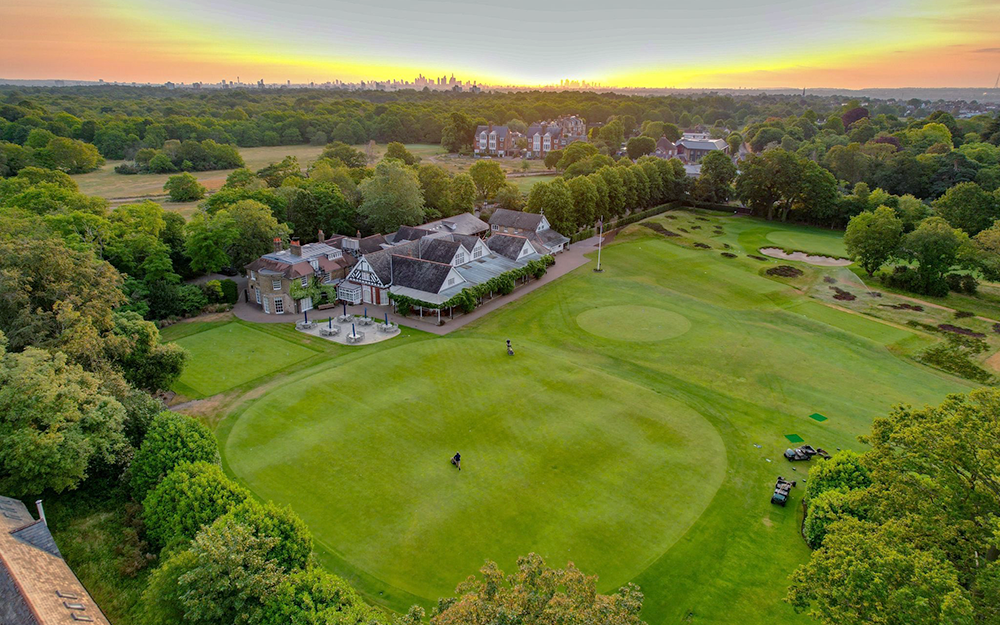Aerial of Royal Wimbledon Golf Club with the London cityscape in the distance
Kevin and I followed on this jam-packed golf trip with another to England with Jane and Roger Franklin, who traveled over from Australia. Roger is a very keen golfer, so Kevin arranged for them to play Swinley Forest, Sunningdale (both Old and New), and then St George’s Hill. They are all private member’s clubs but they do allow some visitors.
Myself and Jane booked tickets for the John Singer Sargent show at the Tate and we planned to take the train to London Waterloo station. On the day, Jane didn’t feel well so I went alone.
The Tate Modern
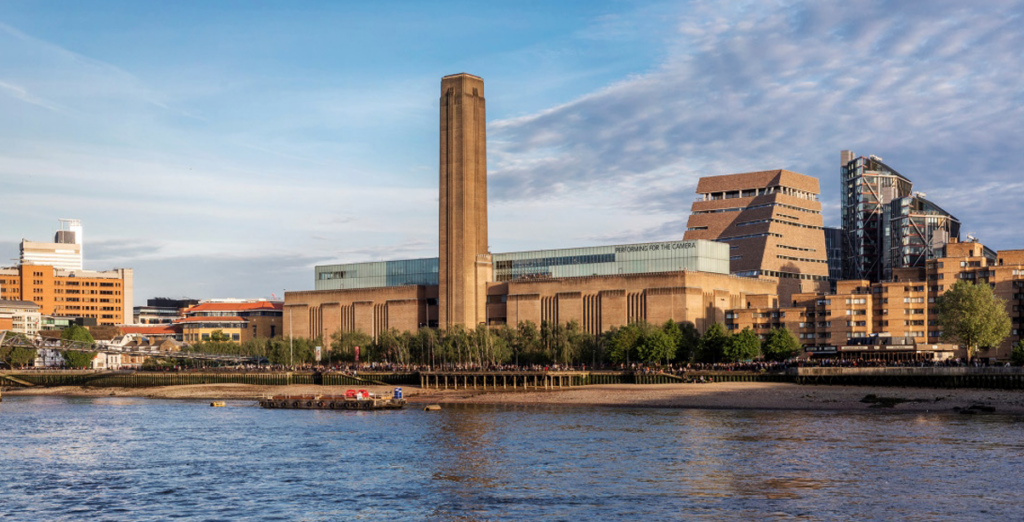
The former Bankside Power Station was selected as the new Tate Modern gallery site in 1994. The following year, Swiss architects Herzog & De Meuron were appointed to convert the building into a gallery. That their proposal retained much of the original character of the building was a key factor in this decision.
Ironically, I went to the Tate Modern instead of the Tate Britain and elected to see a remarkable Expressionist Show of the Blue Rider artists. Other than Kandinsky, I had no idea what I was in for. It was astonishing, to say the least.
Expressionists is a story of friendships told through art. It examines the highly individual creatives that made up The Blue Rider, from Franz Marc’s interest in color to Alexander Sacharoff’s freestyle performance. The women artists played a central role in the movement. Experimental photographs by Gabriele Münter are displayed alongside the dramatic paintings of Marianne Werefkin.
In the early 20th century a circle of friends and close collaborators known as The Blue Rider came together to form, in their own words, ‘a union of various countries to serve one purpose’ – to transform modern art. The artists rallied around Wassily Kandinsky and Gabriele Münter to experiment with color, sound and light, creating bold and vibrant art.
 “The Red Tree” by Marianne Werefkin (1860-1938), tempera on paper
“The Red Tree” by Marianne Werefkin (1860-1938), tempera on paper
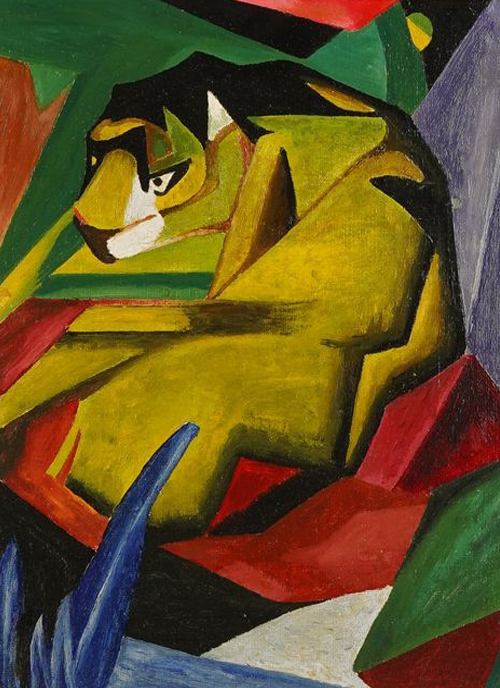 “Tiger” by Franz Marc (1880-1916), oil on canvas
“Tiger” by Franz Marc (1880-1916), oil on canvas
 “Madonna with Poinsettia” by Gabriele Münter (1877-1962) oil on canvas
“Madonna with Poinsettia” by Gabriele Münter (1877-1962) oil on canvas
Royal Wimbledon Golf Club

RWGC is the third oldest golf Club in England dating back to 1865. It has a rich history embracing both the evolution of the Club and the game of golf. Harry Colt, a member of the Club, redesigned the course in 1924. It continues to evolve to keep pace with the game and today provides a tough test over tight fairways with gorse and heather thrown in for good measure.
The one round of golf I did play was at Royal Wimbledon, where Kevin and I hand-delivered a copy of Terroir, since RW is in the book! I was delighted when the the GM, Robert Brewer said they would like 4 more copies! We were blessed with gorgeous sunshine and Tim Dickson, founder and editor of Golf Quarterly, who graciously walked with us for the first seven holes, insuring we didn’t lose our way. This oasis in the heart of London is a private member’s club, so you won’t find a little sign saying “Next hole this way” and the next hole is not always obvious.
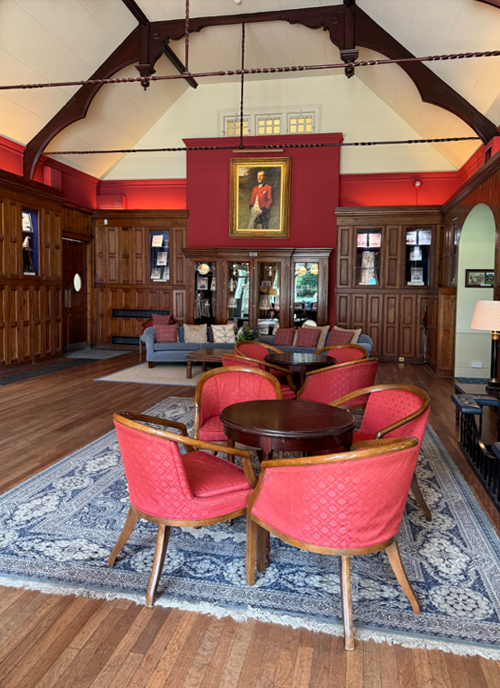 Royal Wimbledon clubhouse interior – Old Dining Room – holds 50/60 for a seated lunch or dinner
Royal Wimbledon clubhouse interior – Old Dining Room – holds 50/60 for a seated lunch or dinner
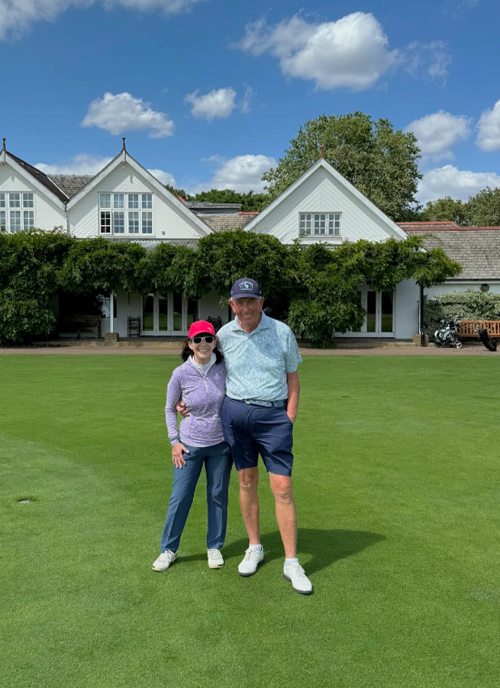 It was a great privilege to play Royal Wimbledon Golf Club just outside London…
It was a great privilege to play Royal Wimbledon Golf Club just outside London…
 Royal Wimbledon Golf Course par 3 (5th hole)
Royal Wimbledon Golf Course par 3 (5th hole)
Royal St George’s Golf Club

Located on the Kent coastline, Royal St George’s has staged 15 Open Championships, more than any course outside of Scotland. The club was founded by the surgeon Laidlaw Purves in 1887 in a setting of wild duneland. Many holes feature blind or partially blind shots, although the unfairness element has been reduced somewhat, after several 20th century modifications. The course also possesses the deepest bunker in championship golf, located on its fourth hole.
The last leg of the journey took us to Kent in South East England so Kevin and Roger could play Royal St George’s (which is in the Open rota) and Rye. Jacket and ties for the men!
I think it’s safe to say, the guys were golfed out! However, a second round was scheduled at Sandwich, and since Roger bowed out, I got to play the storied course. Oh what a day! I had so much fun, thanks to our fabulous caddies, Vince and Tony. They both embraced my style of “Happy Golf” which completely eliminated the intimidation factor, especially playing the fourth hole which has the deepest bunker in championship golf. Luckily for me, I never even saw it.
 At the 10th green, with the whole course spread out behind us. I will forever love this memory of playing one of the most authentic links courses in the world.
At the 10th green, with the whole course spread out behind us. I will forever love this memory of playing one of the most authentic links courses in the world.
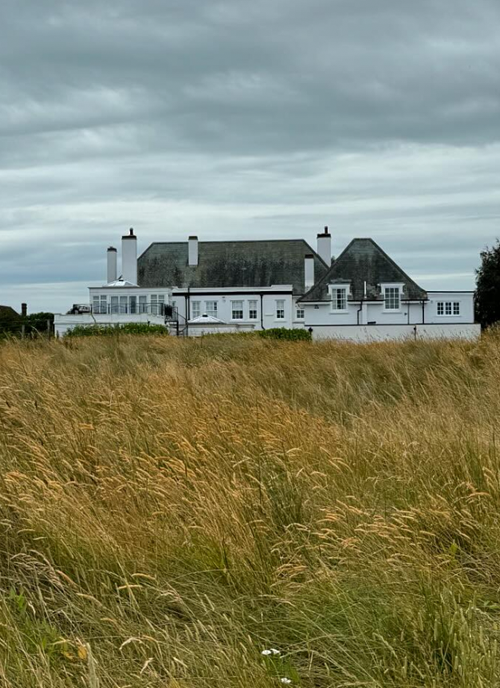 Ian Fleming’s house, the house Tiger Woods would rent when playing the Open. Lots of James Bond stories are connected to Royal St Georges.
Ian Fleming’s house, the house Tiger Woods would rent when playing the Open. Lots of James Bond stories are connected to Royal St Georges.
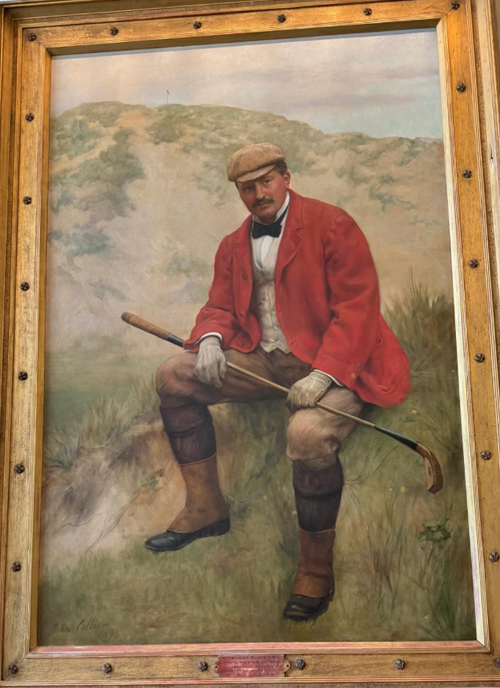 Portrait of the founder, Dr. William Laidlaw Purves by artist John Collier (dated 1896). Purves, a Scottish born surgeon, was also an active supporter of women’s golf.
Portrait of the founder, Dr. William Laidlaw Purves by artist John Collier (dated 1896). Purves, a Scottish born surgeon, was also an active supporter of women’s golf.
We made our way back to Ireland on the ferry from Fishguard to Rosslare. Along with getting a look at the ground where Jason Straka and Dana Fry are building the new course called Curracloe Links, we then hand-delivered a copy of Terroir to Pat Ruddy The Elder. Pat not only wrote the Foreword, he is also profiled in the chapter called “Designers Talk Turf.”
All in all, an epic adventure across the pond.
 We are in the lobby of the brand new Ravenport Resort getting familiar with the entire property which includes Curracloe Links, designed by Dana Fry and Jason Straka. Kevin and I were delivering a copy of “Terroir of Golf” for the Neville Hotels Group, as they are mentioned in the book alongside the profile of Jason Straka in the chapter: Designers Talk Turf.”
We are in the lobby of the brand new Ravenport Resort getting familiar with the entire property which includes Curracloe Links, designed by Dana Fry and Jason Straka. Kevin and I were delivering a copy of “Terroir of Golf” for the Neville Hotels Group, as they are mentioned in the book alongside the profile of Jason Straka in the chapter: Designers Talk Turf.”
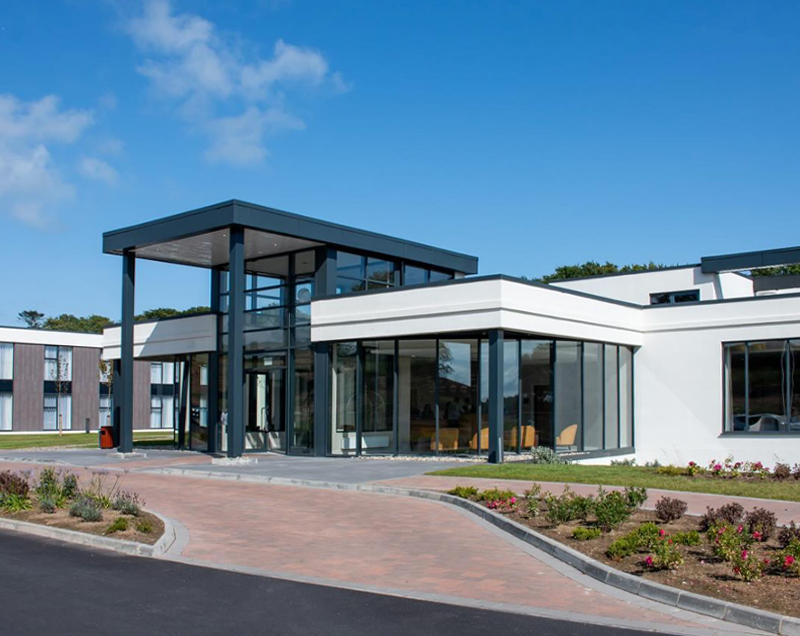 Our luxurious room at pristine Revenport Resort had every comfort you could want. The new Curracloe Links, designed by the team of Jason Straka and Dana Fry, is under construction now and it wraps around this new Neville Hotel. It is also great to know this new gem of a retreat is less than 2 hours from Dublin
Our luxurious room at pristine Revenport Resort had every comfort you could want. The new Curracloe Links, designed by the team of Jason Straka and Dana Fry, is under construction now and it wraps around this new Neville Hotel. It is also great to know this new gem of a retreat is less than 2 hours from Dublin


